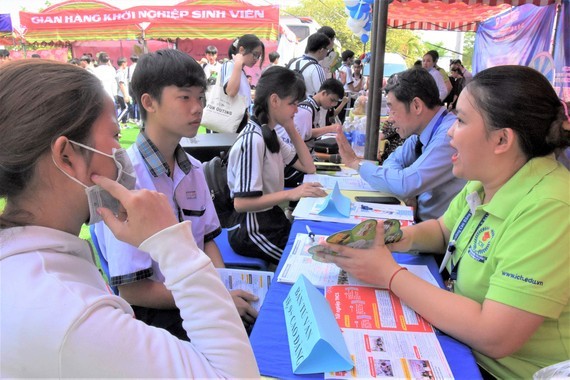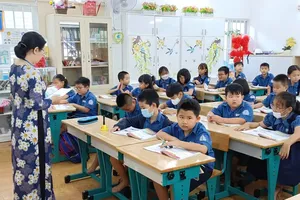 Vocational schools arestill short of learners
Vocational schools arestill short of learners
Vo Long Trieu, Rector of Thu Duc College of Technology, said that the school started opening online enrollment on March 1. Up to now, the school has completed 80 percent of the total of nearly 3,900 assigned quota. In addition, some majors such as Finance - Banking, Electrical installation and control engineering in industry, and Industrial automation have an enrolment of only about 50 percent of the quota.
Ly Tu Trong Technical College is allowed to have 6,000 students, but by mid-August, just 60 percent of students enrolled in the school.
Many universities strengthen the criteria for reviewing transcripts to meet the quota, making it difficult for vocational schools to recruit. Public vocational schools are facing difficulties in enrolment, many non-public vocational schools are even more difficult when a new school can recruit about 30 percent of the target. Some majors cannot recruit the minimum number of students to open classes, said Dr. Pham Huu Loc, Rector of Ly Tu Trong Technical College.
Similarly, Principal of Ho Chi Minh City International College Nguyen Dang Ly worried that with the easy way of university admission like this year, the enrollment of vocational education institutions will face many obstacles. In particular, by the end of September, new universities announced the list of admissions, causing more candidates to continue to wait for opportunities. Therefore, although the school has enrolled nearly 50 percent of the target as planned, this rate is still very worrying, while domestic and foreign businesses are currently bumping into difficulties because of the lack of skilled workers.
According to the plan of Ho Chi Minh City Vocational School, vocational training facilities try to recruit 371,000 new learners at all levels from elementary to college in 2022 as well as provide training for 5,300 rural workers in the area. Moreover, they strive to supply 86.05 percent of laborers for the city's labor market by the end of the year. However, through quick reports of vocational schools, the results only reached 40 percent-60 percent of the enrollment quota.
Human resource experts pointed out that vocational schools have not been adequately invested to create an attractive career environment.
Dang Minh Su, Head of Vocational Education Department under the Ho Chi Minh City Department of Labor, Invalids and Social Affairs, said that the progress of vocational education enrollment largely depends on the enrollment progress of higher education. The Ministry of Education and Training’s enrollment regulations often have many changes, so vocational schools will not be able to turn back in time, even though they are recruited all year round.
According to the principals of many vocational schools, all difficulties can be solved if the classification of students in vocational schools is given more attention. In addition, schools want to be able to access preferential loans from the city, because the Covid-19 epidemic has made many schools almost exhausted, making it difficult to maintain teaching-learning and enrollment activities. The city needs a mechanism to expand investment in modern teaching facilities and equipment for vocational schools, including non-public schools, to improve training quality to make sure that 100 percent of graduates have jobs.
According to Deputy Director of Ho Chi Minh City Department of Labour, Invalids and Social Affairs Nguyen Van Lam, in fact, not all professions and vocational schools face difficulties in enrollment. Some schools even exceed the quota, students entering the school have to pre-qualify and take an entrance exam.
The reason is that these schools build brands, quality training, good business links; committed to training, and creating jobs for students after graduation. Therefore, the city's vocational education must implement many solutions at the same time in enrollment and training; both improving the quality of training and promoting enrollment communication.
























